#ancient military history
Note
I forgot who it was, but I always found it so curious that it was recorded that Hephaistion was “wounded in the arm” during one of the battles. I know only the important things tended to be recorded, and of course, war and injury go hand-in-hand. I’m guessing that was pointed out because it was a really, really bad injury. Right? Not sure how that mention would’ve been relevant otherwise.
Arrian recorded Hephaistion’s injury.
In general, Arrian records a lot of military details that the other sources ignore or lack an interest in. Even so, with rare exceptions, his focus remains the army elite. And yes, Hephaistion is certainly among the elite, both owing to his importance to Alexander, but also, here, his role in the battle.
Diodoros tells us he fought first among the somatophylakes, or bodyguard. This has sometimes been misunderstood due to Diodoros’s tendency to mix-and-match terms. Diodoros doesn’t mean the 7-man unit of Somatophylakes, who didn’t fight together anyway. Their role as bodyguards was OFF the field. And I don’t think Hephaistion was a member of that unit yet anyway.
So what does he mean? The agema, or Royal squadron, of the Hypaspists. There were “regular” Hypaspists, and “royal” Hypaspists. Under Philip, this unit (then called Pezhetairoi) was the personal guard of the king in combat. When the unit itself came to be is a more involved discussion, but Philip made a significant change: he picked men for their size and fighting skill, not their high birth. Yet that was for the “regular” Hypaspists only, and it became one of the first pathways to advancement on skill alone in the Macedonian army. The royal unit, however, was another matter. Both Philip and Alexander made their military changes gradually.
Even under Philip, the Hypaspists were a stepping stone to higher commands for the sons of Hetairoi (Macedonian aristocrats). The whole unit was under the command of Nikanor, son of Parmenion. It was second only to the Companion Cavalry in prestige (which was commanded by Nikanor’s elder brother Philotas).
Yet overall command was different from unit command. E.g., Philotas commanded the Companions as a whole, but Kleitos Melas (Black Kleitos) commanded the Companion agema (royal unit) of Companion Cavalry. The king might lead that unit in battle, but he didn’t have time for the day-to-day duties of unit command, so Kleitos was their commander.
Similarly, by Gaugamela, Hephaistion had been advanced to command the Hypaspist agema. This may be why, later, Alexander advanced both him and Kleitos to joint command of the Companion Cavalry, after Philotas’s arrest and execution. Each had commanded the two most prestigious individual units in the army.
If Heckel is right (and I think he is), the Hypaspist agema at Gaugamela served as hammippoi, an elite form of hoplite who, literally, ran with the cavalry. (Keep in mind the horses would be mostly trotting or cantering, not galloping for long.) The job of the hammippoi was to help protect the horses and any cavalryman who was unhorsed, as the cavalry were much more lightly armed. But it’s a demanding job, to be sure.
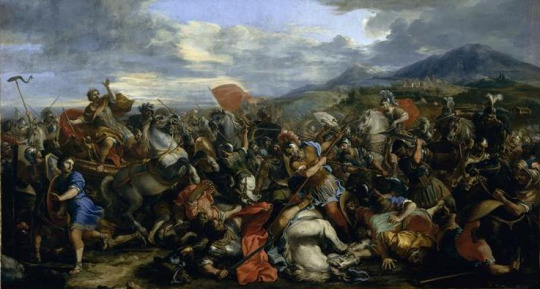
At Gaugamela, Arrian tells us specifically of an encounter as Alexander returned with his Companion agema, after breaking off pursuit of Darius. They accidentally collided with some fleeing Persians and Indians (et al.), and it became the hardest fighting in the entire battle, as the fleeing men were desperate. I suspect this is where Hephaistion was wounded, as we’re told something like 60 Companions died in that engagement alone. It was brutal.
All that may help contextualize why Arrian names Hephaistion’s wounding. along with a couple others. He was the commander of a very important unit in the army.
#asks#Hephaistion#Hephaestion#Hypaspists#Hammippoi#Battle of Gaugamela#Alexander the Great#ancient Greece#ancient military history#Arrian#Classics#tagamemnon
14 notes
·
View notes
Text
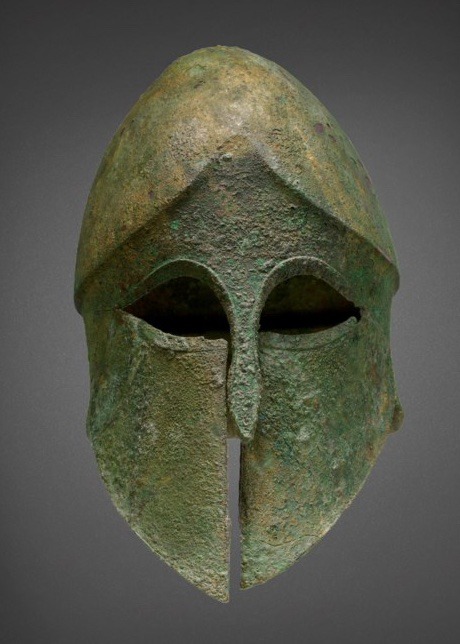





A GREEK BRONZE CORINTHIAN HELMET
LATE ARCHAIC TO EARLY CLASSICAL PERIOD, CIRCA 525-475 B.C.
#A GREEK BRONZE CORINTHIAN HELMET#LATE ARCHAIC TO EARLY CLASSICAL PERIOD#CIRCA 525-475 B.C.#bronze#bronze helmet#military equipment#ancient artifacts#archeology#archeolgst#history#history news#ancient history#ancient culture#ancient civilizations#ancient greece#greek history
210 notes
·
View notes
Text

Alabastron (Perfume Bottle) from Athens, Greece dated around 470 BCE on display in the British Museum in London, England
This bottle shows an armed Amazon wearing armour and trousers. The Amazons were a group of warrior women whom the Greeks believed to live North of the Black Sea. Unlike Greek women, they are often represented as wearing trousers, a long sleeved top, and a cuirass like the one here. The Amazon on this bottle also carries a shield with an attached patterned cloth and a quiver.
Photographs taken by myself 2020
#armour#armor#art#archaeology#military history#ancient#greece#greek#fashion#british museum#london#barbucomedie
517 notes
·
View notes
Text
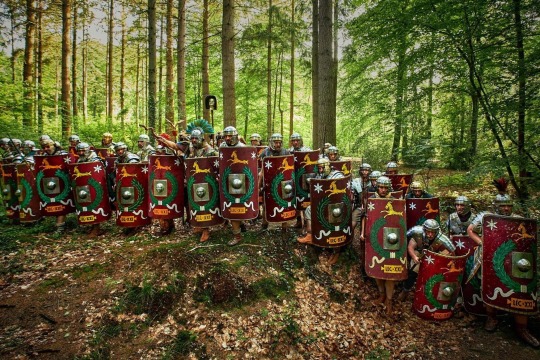
Legion XXI “Rapax.”
119 notes
·
View notes
Text
Animals have been utilized in different ways by armed forces – but were Barbary apes used as military monkeys in the Roman Empire? Remains of a 5th century Barbary ape buried with military insignia in Spain raises this interesting question.
1K notes
·
View notes
Text
Countries that are no more: Achaemenid Empire (550BC-330BC)
It was not the first empire of Iranian peoples, but it arose as probably the greatest in terms of influence and became the measure by which all subsequent Iranian empires tended to compare themselves and its influence on culture, government & civil infrastructure would influence others beyond the span of its territory and the span of time. This is the Achaemenid Empire.
Name: In Old Persian it was known as Xšāça or the "The Kingdom or the Empire", it was named the Achaemenid Empire by later historians. Named after the ruling dynasty established by its founder Cyrus the Great who cited the name of his ancestor Haxāmaniš or Achaemenes in Greek as progenitor of the dynasty. It is sometimes also referred to as the First Persian Empire. The Greeks simply referred to it as Persia, the name which stuck for the geographic area of the Iranian plateau well into the modern era.
Language: Old Persian & Aramaic were the official languages. With Old Persian being an Iranian language that was the dynastic language of the Achaemenid ruling dynasty and the language of the Persians, an Iranian people who settled in what is now the southwestern Iranian plateau or southwest Iran circa 1,000 BC. Aramaic was a Semitic language that was the common and administrative language of the prior Neo-Assyrian & Neo-Babylonian Empires which centered in Mesopotamia or modern Iraq, Syria & Anatolian Turkey. After the Persian conquest of Babylon, the use of Aramaic remained the common tongue within the Mesopotamian regions of the empire, eventually becoming a lingua franca across the land. As the empire spread over a vast area and became increasingly multiethnic & multicultural, it absorbed many other languages among its subject peoples. These included the Semitic languages Akkadian, Phoenician & Hebrew. The Iranian language of Median among other regional Iranian languages (Sogdian, Bactrian etc). Various Anatolian languages, Elamite, Thracian & Greek among others.
Territory: 5.5 million kilometers squared or 2.1 million square miles at its peak circa 500BC. The Achaemenid Empire spanned from southern Europe in the Balkans (Greece, Bulgaria, European Turkey) & northwest Africa (Egypt, Libya & Sudan) in the west to its eastern stretches in the Indus Valley (Pakistan) to parts of Central Asia in the northeast. It was centered firstly in the Iranian Plateau (Iran) but also held capitals in Mesopotamia (Iraq). Territory was also found in parts of the Arabian Peninsula & the Caucausus Mountains.
Symbols & Mottos: The Shahbaz or Derafsh Shahbaz was used as the standard of Cyrus the Great, founder of the empire. It depicts a bird of prey, typically believed to be a falcon or hawk (occasionally an eagle) sometimes rendered gold against a red backdrop and depicts the bird holding two orbs in its talons and adorned with an orb likewise above its head. The symbolism was meant to depict the bird guiding the Iranian peoples to conquest and to showcase aggression & strength coupled with dignity. The imperial family often kept falcons for the pastime of falconry.
Religion: The ancient Iranian religion of Zoroastrianism served as the official religion of the empire. It was adopted among the Persian elite & and had its unique beliefs but also helped introduce the concept of free-will among its believers, an idea to influence Judaism, Christianity & Islam in later centuries. Despite this official religion, there was a tolerance for local practices within the subject regions of the empire. The ancient Mesopotamian religion in Babylon & Assyria, Judaism, the Ancient Greek & Egyptian religions & Vedic Hinduism in India was likewise tolerated as well. The tolerance of the Achaemenids was considered a relative hallmark of their dynasty from the start. Famously, in the Old Testament of the Bible it was said that it was Cyrus the Great who freed the Jews from their Babylonian captivity and allowed them to return to their homeland of Judea in modern Israel.
Currency: Gold & silver or bimetallic use of coins became standard within the empire. The gold coins were later referred to as daric and silver as siglos. The main monetary production changes came during the rule of Darius I (522BC-486BC). Originally, they had followed the Lydian practice out of Anatolia of producing coins with gold, but the practice was simplified & refined under the Achaemenids.
Population: The estimates vary ranging from a low end of 17 million to 35 million people on the upper end circa 500BC. The official numbers are hard to determine with certainty but are generally accepted in the tens of millions with the aforementioned 17-35 million being the most reasonable range based on available sources.
Government: The government of the Achaemenid Empire was a hereditary monarchy ruled by a king or shah or later referred to as the ShahanShah or King of Kings, this is roughly equivalent to later use of the term Emperor. Achaemenid rulers due the unprecedented size of their empire held a host of titles which varied overtime but included: King of Kings, Great King, King of Persia, King of Babylon, Pharaoh of Egypt, King of the World, King of the Universe or King of Countries. Cyrus the Great founded the dynasty with his conquest first of the Median Empire and subsequently the Neo-Babylonians and Lydians. He established four different capitals from which to rule: Pasargadae as his first in Persia (southwest central Iran), Ecbatana taken from the Medians in western Iran's Zagros Mountains. The other two capitals being Susa in southwest Iran near and Babylon in modern Iraq which was taken from the Neo-Babylonians. Later Persepolis was made a ceremonial capital too. The ShahanShah or King of Kings was also coupled with the concept of divine rule or the divinity of kings, a concept that was to prove influential in other territories for centuries to come.
While ultimate authority resided with the King of Kings and their bureaucracy could be at times fairly centralized. There was an expansive regional bureaucracy that had a degree of autonomy under the satrapy system. The satraps were the regional governors in service to the King of Kings. The Median Empire had satraps before the Persians but used local kings they conquered as client kings. The Persians did not allow this because of the divine reverence for their ShahanShah. Cyrus the Great established governors as non-royal viceroys on his behalf, though in practice they could rule like kings in all but name for their respective regions. Their administration was over their respective region which varied overtime from 26 to 36 under Darius I. Satraps collected taxes, acted as head over local leaders and bureaucracy, served as supreme judge in their region to settle disputes and criminal cases. They also had to protect the road & postal system established by the King of Kings from bandits and rebels. A council of Persians were sent to assist the satrap with administration, but locals (non-Persian) could likewise be admitted these councils. To ensure loyalty to the ShahanShah, royal secretaries & emissaries were sent as well to support & report back the condition of each satrapy. The so called "eye of the king" made annual inspections of the satrapy to ensure its good condition met the King of Kings' expectations.
Generals in chief were originally made separate to the satrap to divide the civil and military spheres of government & were responsible for military recruitment but in time if central authority from the ShahanShah waned, these could be fused into one with the satrap and general in chiefs becoming hereditary positions.
To convey messages across the widespread road system built within the empire, including the impressive 2,700 km Royal Road which spanned from Susa in Iran to Sardis in Western Anatolia, the angarium (Greek word) were an institution of royal messengers mounted on horseback to ride to the reaches of the empire conveying postage. They were exclusively loyal to the King of Kings. It is said a message could be reached to anywhere within the empire within 15 days to the empire's vast system of relay stations, passing message from rider to rider along its main roads.
Military: The military of the Achaemenids consisted of mostly land based forces: infantry & cavalry but did also eventually include a navy.
Its most famous unit was the 10,000-man strong Immortals. The Immortals were used as elite heavy infantry were ornately dressed. They were said to be constantly as 10,000 men because for any man killed, he was immediately replaced. Armed with shields, scale armor and with a variety of weapons from short spears to swords, daggers, slings, bows & arrows.
The sparabara were the first line of infantry armed with shields and spears. These served as the backbone of the army. Forming shield walls to defend the Persian archers. They were said to ably handle most opponents and could stop enemy arrows though their shields were vulnerable to enemy spears.
There was also the takabara light infantry and though is little known of them it seems they served as garrison troops and skirmishers akin to the Greek peltast of the age.
The cavalry consisted of four distinct groups: chariot driven archers used to shoot down and break up enemy formations, ideally on flat grounds. There was also the traditional horse mounted cavalry and also camel mounted cavalry, both served the traditional cavalry functions and fielded a mix of armor and weapons. Finally, there was the use of war elephants which were brought in from India on the empire's eastern reaches. These provided archers and a massive way to physically & psychologically break opposing forces.
The navy was utilized upon the empire's reaching the Mediterranean and engaged in both battles at sea and for troop transport to areas where troops needing deploying overseas, namely in Greece.
The ethnic composition of Achaemenid military was quite varied ranging from a Persian core with other Iranian peoples such as the Medians, Sogdian, Bactrians and Scythians joining at various times. Others including Anatolians, Assyrians, Babylonians, Anatolians, Indians, Arabs, Jews, Phoenicians, Thracians, Egyptians, Ethiopians, Libyans & Greeks among others.
Their opponents ranged from the various peoples they conquered starting with the Persian conquest of the Medians to the Neo-Babylonians, Lydians, Thracians, Greeks, Egyptians, Arabs & Indians and various others. A hallmark of the empire was to allow the local traditions of subjugated areas to persist so long as garrisons were maintained, taxes were collected, local forces provided levies to the military in times of war, and they did not rebel against the central authority.
Economy: Because of the efficient and extensive road system within the vast empire, trade flourished in a way not yet seen in the varied regions it encompassed. Tax districts were established with the satrapies and could be collected with relative efficiency. Commodities such as gold & jewels from India to the grains of the Nile River valley in Egypt & the dyes of the Phoenicians passed throughout the realm's reaches. Tariffs on trade & agricultural produce provided revenue for the state.
Lifespan: The empire was founded by Cyrus the Great circa 550BC with his eventual conquest of the Median & Lydian Empires. He started out as Cyrus II, King of Persia a client kingdom of the Median Empire. His reign starting in 559BC. Having overthrown and overtaken the Medians, he turned his attention Lydia and the rest of Anatolia (Asia Minor). He later attacked the Eastern Iranian peoples in Bactria, Sogdia and others. He also crossed the Hindu Kush mountains and attacked the Indus Valley getting tribute from various cities.
Cyrus then turned his attention to the west by dealing with the Neo-Babylonian Empire. Following his victory in 539BC at the Battle of Opis, the Persians conquered the Babylonia with relative quickness.
By the time of Cyrus's death his empire had the largest recorded in world history up to that point spanning from Anatolia to the Indus.
Cyrus was succeeded by his sons Cambyses II and Bardiya. Bardiya was replaced by his distant cousin Darius I also known as Darius the Great, whose lineage would constitute a number of the subsequent King of Kings.
Darius faced many rebellions which he put down in succession. His reign is marked by changes to the currency and the largest territorial expansion of the empire. An empire at its absolute zenith. He conquered large swaths of Egypt, the Indus Valley, European Scythia, Thrace & Greece. He also had exploration of the Indian Ocean from the Indus River to Suez Egypt undertaken.
The Greek kingdom of Macedon in the north reaches of the Hellenic world voluntarily became a vassal of Persia in order to avoid destruction. This would prove to be a fateful first contact with this polity that would in time unite the Greek-speaking world in the conquest of the Achaemenid Empire. However, at the time of Darius I's the reign, there were no early indications of this course of events as Macedon was considered even by other Greek states a relative backwater.
Nevertheless, the Battle of Marathon in 490BC halted the conquest of mainland Greece for a decade and showed a check on Persia's power in ways not yet seen. It is also regarded as preserving Classical Greek civilization and is celebrated to this day as an important in the annals of Western civilization more broadly given Classical Greece & in particular Athens's influence on western culture and values.
Xerxes I, son of Darius I vowed to conquer Greece and lead a subsequent invasion in 480BC-479BC. Xerxes originally saw the submission of northern Greece including Macedon but was delayed by the Greeks at the Battle of Thermopylae, most famously by Spartan King Leonidas and his small troop (the famed 300). Though the Persians won the battle it was regarded as a costly victory and one that inspired the Greeks to further resistance. Though Athens was sacked & burnt by the Persians, the subsequent victories on sea & land at Salamis & Plataea drove the Persians back from control over Greece. Though war would rage on until 449BC with the expulsion of the Persians from Europe by the Greeks.
However, the Greeks found themselves in a civil war between Athens & Sparta and Persia having resented the Athenian led coalition against their rule which had expelled them from Europe sought to indirectly weaken the Greeks by supporting Greek factions opposed to Athens through political & financial support.
Following this reversal of fortune abroad, the Achaemenid Empire not able to regain its foothold in Europe, turned inward and focused more on its cultural development. Zoroastrianism became the de-facto official religion of the empire. Additionally, architectural achievements and improvements in its many capitals were undertaken which displayed the empire's wealth. Artaxerxes II who reigned from 405BC-358BC had the longest reign of any Achaemenid ruler and it was characterized by relative peace and stability, though he contended with a number of rebellions including the Great Satraps Revolt of 366BC-360BC which took place in Anatolia and Armenia. Though he was successful in putting down the revolt. He also found himself at war with the Spartans and began to sponsor the Athenians and others against them, showcasing the ever dynamic and changing Greco-Persian relations of the time.
Partially for safety reasons, Persepolis was once again made the capital under Artaxerxes II. He helped expand the city and create many of its monuments.
Artaxerxes III feared the satraps could no longer be trusted in western Asia and ordered their armies disbanded. He faced a campaign against them which suffered some initial defeats before overcoming these rebellions, some leaders of which sought asylum in the Kingom of Macedon under its ruler Philip II (father of Alexander the Great).
Meanwhile, Egypt had effectively become independent from central Achaemenid rule and Artaxerxes III reinvaded in around 340BC-339BC. He faced stiff resistance at times but overcame the Egyptians and the last native Egyptian Pharaoh Nectanebo II was driven from power. From that time on ancient Egypt would be ruled by foreigners who held the title Pharaoh.
Artaxerxes III also faced rebellion from the Phoenicians and originally was ejected from the area of modern coastal Lebanon, Syria & Israel but came back with a large army subsequently reconquered the area including burning the Phoenician city of Sidon down which killed thousands.
Following Artaxerxes III's death his son succeeded him but a case of political intrigue & dynastic murder followed. Eventually Darius III a distant relation within the dynasty took the throne in 336BC hoping to give his reign an element of stability.
Meanwhile in Greece, due to the military reforms and innovations of Philip II, King of Macedon, the Greek speaking world was now unified under Macedon's hegemony. With Philip II holding the title of Hegemon of the Hellenic League, a relatively unified coalition of Greek kingdoms and city-states under Macedon premiership that formed to eventually invade Persia. However, Philip was murdered before his planned invasion of Asia Minor (the Achaemenid's westernmost territory) could commence. His son Alexander III (Alexander the Great) took his father's reforms and consolidated his hold over Greece before crossing over to Anatolia himself.
Darius III had just finished reconquering some rebelling vestiges of Egypt when Alexander army crossed over into Asia Minor circa 334BC. Over the course of 10 years Alexander's major project unfolded, the Macedonian conquest of the Persian Empire. He famously defeated Persians at Granicus, Issus and Gaugamela. The latter two battles against Darius III in person. He took the King of Kings family hostage but treated them well while Darius evacuated to the far eastern reaches of his empire to evade capture. He was subsequently killed by one of his relatives & satraps Bessus, whom Alexander eventually had killed. Bessus had declared himself King of Kings though this wasn't widely recognized and most historians regard Darius III, the last legitimate ShahanShah of Achaemenids.
Alexander had taken Babylon, Susa & Persepolis by 330BC and effectively himself was now ruler of the Persian Empire or at least its western half. In addition to being King of Macedon & Hegemon of the Hellenic League, he gained the titles King of Persia, Pharaoh of Egypt & Lord of Asia. Alexander would in time eventually subdue the eastern portions of the Achaemenid realm including parts of the Indus Valley before turning back to Persia and Babylon where he subsequently became ill and died in June 323BC at age 32. Alexander's intentions it appears were never to replace the Achaemenid government & cultural structure, in fact he planned to maintain and hybridize it with his native Greek culture. He was in fact an admirer of Cyrus the Great (even restoring his tomb after looting) & adopted many Persian customs and dress. He even allowed the Persians to practice their religion and had Persian and Greeks start to serve together in his army. Following his death and with no established successor meant the empire he established which essentially was the whole Achaemenid Empire's territory in addition to the Hellenic world fragmented into different areas run by his most trusted generals who established their own dynasties. The Asian territories from Anatolia to the Indus (including Iran and Mesopotamia) gave way to the Hellenic ruled Seleucid Empire while Egypt became the Hellenic ruled Ptolemaic Kingdom. The synthesis of Persian and Greek cultures continued in the Seleucid and Greco-Bactrian kingdoms of antiquity.
The Achaemenid Empire lasted for a little over two centuries (550BC-330BC) but it casted a long shadow over history. Its influence on Iran alone has persisted into the modern age with every subsequent Persian Empire claiming to be its rightful successor from the Parthian & Sasanian Empires of pre-Islamic Iran to the Safavids of the 16th-18th century and the usage of the title Shah until the last Shah's ejection from power in the 1979 Islamic Revolution. Even the modern Islamic Republic of Iran uses Achaemenid imagery in some military regiments and plays up its importance in tourism and museums as a source of pride to Persian (Farsi) & indeed Iranian heritage. Likewise, its form of governance and the pushing of the concept of divine rights of kings would transplant from its Greek conquerors into the rest of Europe along with various other institutions such as its road & mail system, tax collection & flourishing trade. Its mix of centralized & decentralized governance. Its religious & cultural tolerance of local regions even after their conquest would likewise serve as a template for other empires throughout history too. The Achaemenid Empire served as a template for vast international & transcontinental empires that would follow in its wake & surpass its size & scope of influence. However, it is worth studying for in its time, it was unprecedented, and its innovations so admired by the likes of Alexander the Great and others echo into the modern era.
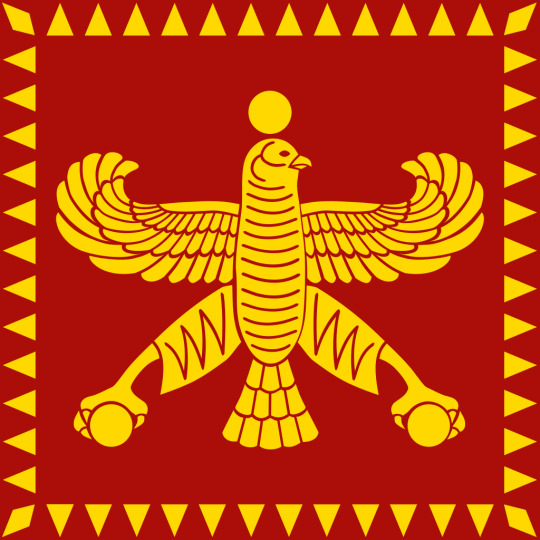
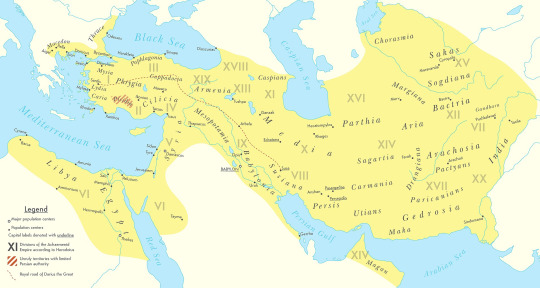


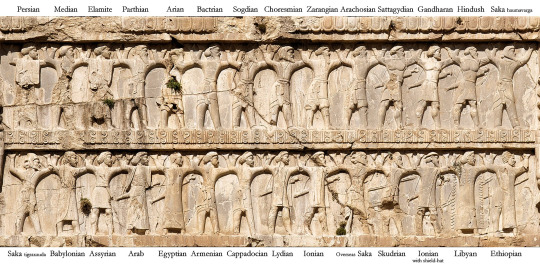
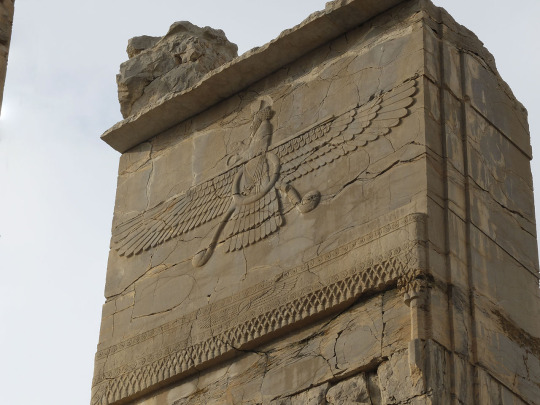




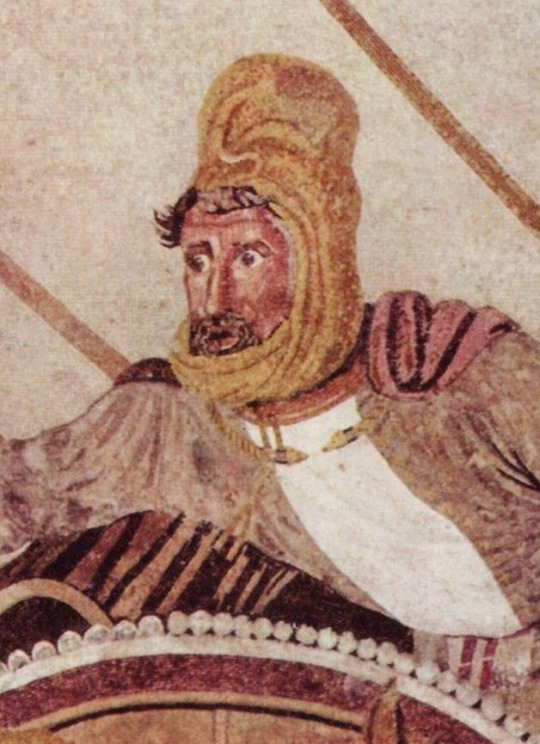
#military history#antiquity#iran#greece#ancient greece#classical greece#ancient ruins#ancient iran#ancient persia#achaemenid#persia#zoroastrianism#alexander the great#cyrus the great#xerxes#artwork#government#history#persian empire#ancient egypt
88 notes
·
View notes
Note
What, in your personal opinion, would you say are the main mistakes made by Athens during the Pelopennesian War? What could they have done to win?
This is not my area of expertise at all (I would recommend @warsofasoiaf or Bret Devereaux) so I'm going to be going back to the couple of classes I took on ancient Greece in my undergrad days.
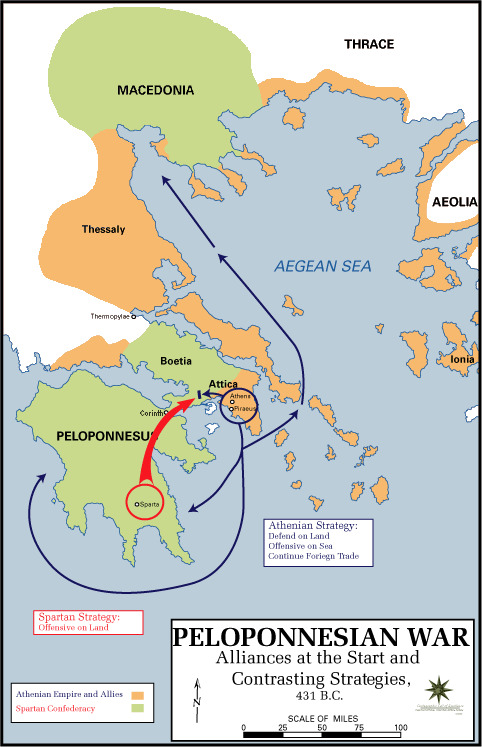
I would argue that the Athenians' initial defensive strategy under Pericles and then its more aggressive successor under Cleon and Demosthenes was in general quite successful against the Spartans. The Battle of Amphipolis was very much a close-run thing that still resulted in Athens being able to challenge Spartan hegemony on the Peloponnese for the first time.
However, I think Alcibiades was the most significant factor in the Athenian defeat. Having squandered Athens' opportunity to crack Spartan land power at Mantinea, Alcibiades went all-in on his Sicilian expedition - and then promptly defected to the Spartans, fracturing Athenian political unity. The Sicilian expedition all but destroyed Athens' naval hegemony, and even after they were able to somewhat recover, the mounting losses and internal conflict meant that Athens could not fight both Sparta and the Persians at the same time.
37 notes
·
View notes
Text
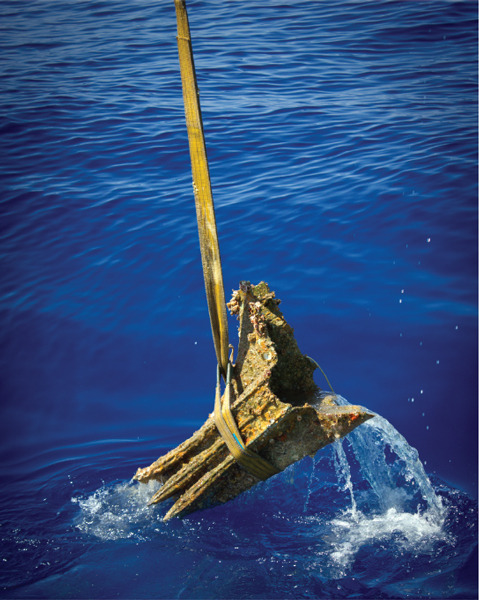
Beak of a warship from the First Punic War, recovered from the seabed near Sicily. Sailors attached these to the prows of their ships and then attempted to sink enemy ships by ramming. The rostra used for public speeches in Rome was decorated with many captured beaks, as was Pompey's house. Image from Mary Beard's book SPQR.
54 notes
·
View notes
Text
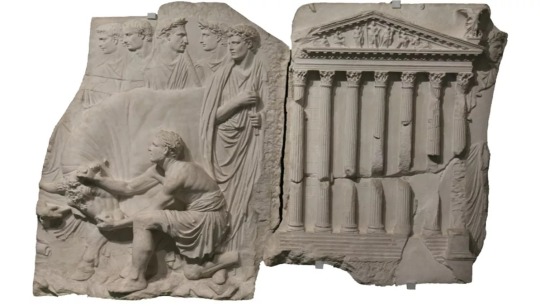
Plaster cast of a relief of a bull being sacrificed in front of the temple of Mars Ultor. This scene comes from a larger monument which is thought to have commemorated the triumph of emperor Claudius in 44 AD after his armies successfully invaded Britain the previous year. The triumph was celebrated in grand style even though military operations were still ongoing in Britain. Claudius himself spent only sixteen days on the islands and the campaign itself was capably managed by his general Aulus Plautius.
#ancient rome#roman empire#emperor claudius#julio claudian dynasty#aulus plautius#ancient history#ancient culture#ancient civilizations#ancient art#relief#military cred was the only reason claudius invaded britain in the first place#and to be fair he did give aulus plautius an ovation once he came back to rome
20 notes
·
View notes
Text
OCkiss24 day one: almost
The sun lazily drifted through the green canopy of the garden. The insects hummed and somewhere a frog called. White flowers were scattered amongst the leaves. Felix followed Anipe across the shady pavilion, marveling at the lush plant life despite the oppressive Egyptian heat.
“This is my little slice of paradise,” Anipe said, gesturing around her. “When the court and Pharaoh responsibilities get too much, I hide out here.”
Felix knelt down next to a clear pond and looked at his reflection. His curly blond hair and scuffed armor rippled in the gentle wake of a waterstrider. And next to him stood Anipe, her shimmering dress and long braids gently swaying in the wind.
“It’s beautiful,” he murmured.
“Thank you.” Anipe suddenly realized how intimate it felt, showing him her personal garden, a place only she was allowed to go, and her cheeks flushed as she turned away.
The conversation came to an awkward pause, neither of them sure how to continue this careful dance.
Felix stood, dusting his knees off, and attempted a causal tone. “What kind of flower is that? They smell really good.”
“Oh, that’s a lotus. They’re pretty right?”
Anipe grinned and Felix felt his heart jump into his throat. He hadn’t noticed the little gap between her teeth before.
“Here.” Before he knew what was happening, Anipe picked one and tucked it behind his ear, nestling it in his curls. She suddenly seemed to realize what she was doing and froze, fingers still brushing the shell of his ear. She cleared her throat and looked down. “Lotuses remind us that everything grows and changes. At night they close but once the sun returns, they’re full of life again. They are created and reborn just like the gods are. Like people are.”
“Yeah,” Felix breathed.
Anipe glanced back up at him. Felix heard the blood rushing through his ears and before he could stop himself, he slowly leaned forward. It felt like he was being drawn towards her like the sun was drawn towards the horizon. Breathtaking and inevitable. Her eyes fluttered closed as she turned her head. Felix felt her breath dancing across his cheek.
“Opto…” she whispered.
“Yes?”
She opened her mouth to say something but stopped herself. The air between them was charged with the anticipation of her unsaid words. Slowly, she put her hands on his shoulders then slid them down to his chest, gently pushing him away. “We should get back. Every moment we waste is a moment my people suffer.”
She stepped around him and briskly started back towards the palace. Felix frowned at the absence of her warmth but nodded, gripping the hilt of his sword.
“Yes, your majesty.”
#this is set in ancient rome/egypt for context#also 'opto' is a military position that's second in command of the roman legion#felix antonia#ancient rome#original character#historical fiction#history#ancient egypt#ockiss24#oc kiss week#oc
18 notes
·
View notes
Note
What do you think were some of ATG’s biggest/best innovations in warfare? Additionally (and this is kind of a thought more than a question) I thought it was incredibly fascinating how quickly he took to naval warfare despite most Macedonian military expertise being land-based (although I might be wrong)
It took him a while to catch on to naval power, actually—perhaps not surprisingly as Macedon was never that sea focused. Some recent archaeology suggests Pydna was a Macedonian port from way back, and certainly Archelaos moved the capital from Aegae to Pella in order to get a protected port on the Thermaikos Gulf. Later, Kassandros would combine several old settlements NE of Pella into Thessaloniki. Yet the goal of all these seems to have been trade more than military, albeit by Kassandros’ time, he was thinking military too, and certainly the Antigonids did.
Philip rather famously had to retreat his own “navy” (essentially a bunch of pirate-type pentakonters) when only about 20-30 Athenian triremes showed up during one of his campaigns in the north. He would manage to seize over 200 triremes when they were beached but couldn’t take them on the water. The non-Athenian boats he freed, but the Athenians ones? Did he use them himself? Nope, he broke them down for siege engine timber. As we’ll see, siege engineering is where he threw money.
He did realize he needed a better navy before going up against Persia, but his solution was to use Athens’, not build his own—despite owning acres upon acres upon acres of perfect ship timber. It still takes money to build those ships, even if not paying for the timber, and ol’ Phil just didn’t have it then. Plus, navies have to be maintained (ships deteriorate), and I’m not sure Philip cared enough to make that sort of long-term commitment. Alexander is the first Macedonian king (that we know of) to invest significantly in building warships, not just borrowing other people’s, and that wasn’t until late in his career, India forward.
Why the change? I’m about 90% convinced his real next target (before his death) wasn’t Arabia, but Carthage. So obviously, he needed a huge navy, and Persia’s navy (which he was now responsible for) had been famous. Yet he was also building boats for trade linking India back to Asia, specifically Babylon, which is why he made the whole Gedrosia trek in the first place. Baloney on him trying to outdo Cyrus and Semiramis. That’s largely imposition by later authors. He was looking for trade routes.
I do find it curious that the nation who supplied Athens with such copious amounts of ship timber that it became the 3rd front in the Peloponnesian War was not, herself, a naval power.
In terms of military innovation, Philip did more with basic equipment. He created the sarissa, devised the hammer and anvil tactic, and employed combined arms in a masterful way. He’s also the one who invested in artillery. That’s where his extra money went, instead of into ships. Alexander largely refined technology.
Alexander’s military innovations were more in the realm of ideas. Philip had made a few moves towards advancement on ability (not birth). Alexander pushed that forward post-Gaugamela. If he couldn’t touch the highest positions (and may not have wanted to right then), he did introduce advancement on bravery and ability with the lower-level offices among both infantry and cavalry. Especially with cavalry, this would have been tough to force through, as cavalry was traditionally for the elite (who could afford horses). Naturally, they expected to advance based on family connections. Also, following the downfall of Philotas, the cavalry was divided up into increasingly independent units. It started with the division between Hephaistion and Kleitos, but after Kleitos’s death, Alexander broke down the Companions into six hipparchies…not unlike the way the infantry taxeis were each under the command of a single general, who then answered to the man in charge of that wing of the army (Parmenion or Alexander, or later, Krateros or Alexander). This both allowed the army to operate more efficiently, but also prevented too much power concentrated in the hands of any one person. AND it rewarded ability, which tied the receiver to the king, breaking down mini-family dynasties within the army. (Such as Parmenion’s.) Philip had tried this a bit with the Pezhetairoi (later called Hypaspists), who were selected for size and courage. Alexander really expanded it, and renovated how the army command structure worked.
Likewise, Alexander had a rare ability to come up with, on the spot, new ways to use old toys. So, for instance, he put siege engines on boats to attack Tyre. In Thrace, earlier, he used a turtle (and gravity) to break apart carts rolled down on troops from above. He also used sarissai to “mow” down a big wheat field to attack the enemy from an unexpected direction. He built ginormous ramps all around Gaza to bring his machines up to the level of the walls. In India, he used “junk” from the countryside to fill in “impossible” ditches and construct a causeway to attack a mountain fort. Etc. Basically if somebody told him, “You can’t do that,” he figured out a way to do it anyway.
Militarily, he was the ultimate problem-solver, and he was brilliant at military organization. But Philip was more the innovator when it came to the tools of war, from weapons and armor to artillery, even if his son would then use that artillery in ways he hadn’t thought of.
#Alexander the Great#Philip of Macedon#Philip II#Philip II of Macedon#Macedonian military#Macedonian artillery#military history#ancient Macedon#ancient military history#ancient combined armies#Macedonian military innovations#Macedonian army structure#Classics#ancient history#tagamemnon#asks
45 notes
·
View notes
Text
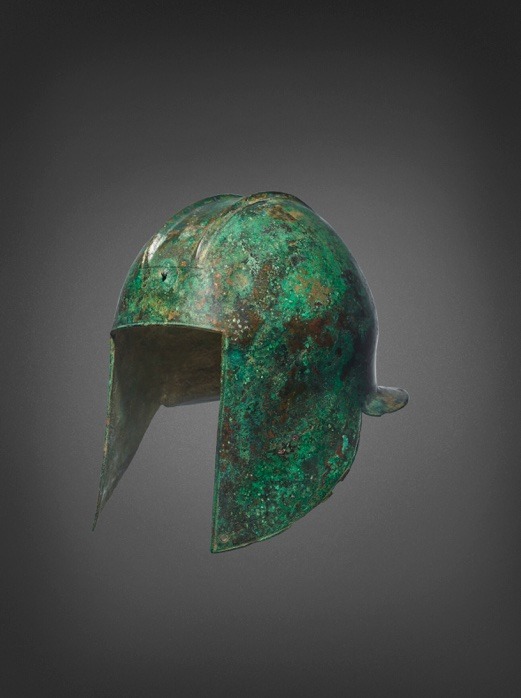

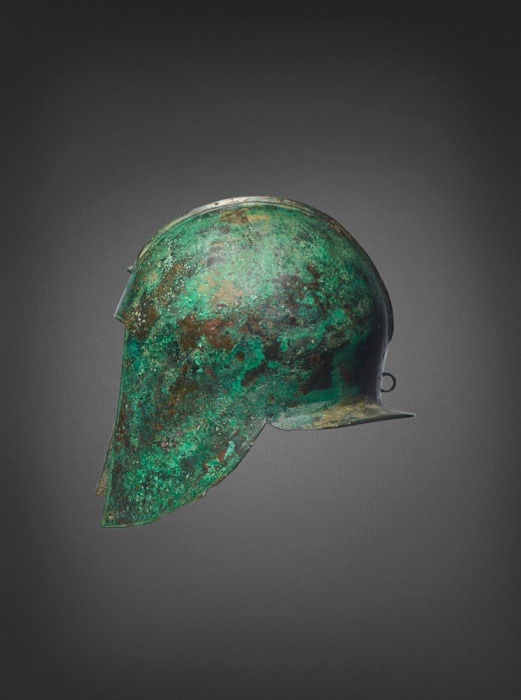


A GREEK BRONZE ILLYRIAN HELMET
ARCHAIC PERIOD, CIRCA 550-480 B.C.
#A GREEK BRONZE ILLYRIAN HELMET#ARCHAIC PERIOD#CIRCA 550-480 B.C.#bronze#bronze helmet#military equipment#ancient artifacts#archeology#archeolgst#history#history news#ancient history#ancient culture#ancient civilizations#ancient greece#greek history
30 notes
·
View notes
Text
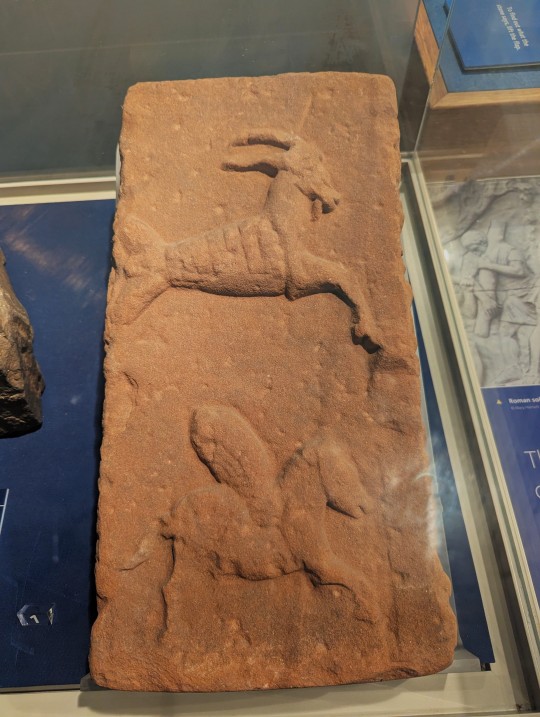
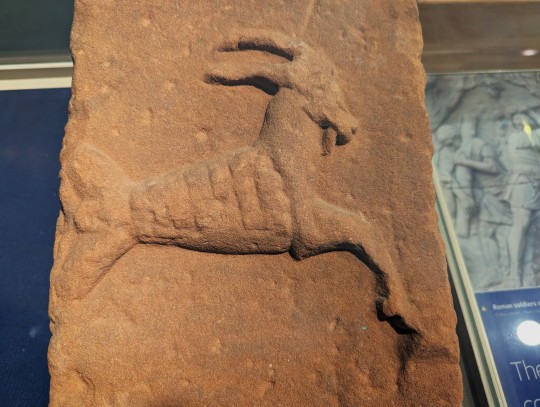
Commemoration Slab from Castlesteads, England dated to the 2nd Century CE on display at the Tullie House Museum and Art Gallery in Carlisle, England
The different Roman legions each had a series of emblems. Besides the eagle, they each had additional badges which they used when they wanted to mark soemthing that they had built or be associated with.
The Second Legion Augusta was raised during the civil war that brought the Emperor Augustus to power. This event was commemorated by adopting Augustus' emblem, a capricorn. This is often called a "Sea Goat" and is a mythical creature that had the head and body of a goat and tail of a fish. In addition they also used the winged horse, a pegasus as an emblem. Both these badges have been found on this building stone at Castlesteads Roman Fort on Hadrian's Wall.
Photographs taken by myself 2023
#art#archaeology#military history#roman empire#england#english#ancient#iron age#tullie house museum and art gallery#carlisle#barbucomedie
100 notes
·
View notes
Text
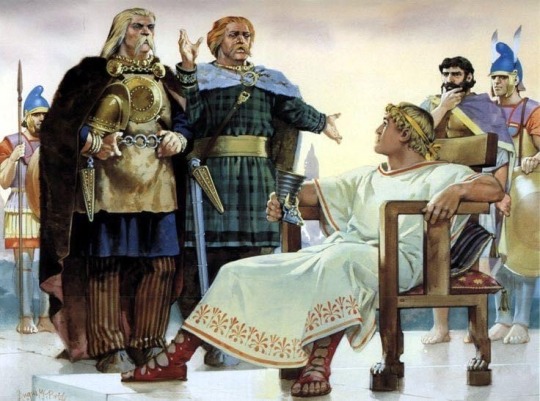
Alexander III of Macedon receiving Celtic emissaries, by the legendary Angus McBride.
67 notes
·
View notes
Text
National Museums Scotland has just announced the extraordinary reconstruction of an 1,800-year-old Roman arm guard. The artifact has been described as “absolutely amazing.”
However, since its initial discovery within the Scottish Borders in 1906, the armor, shattered into over 100 pieces, languished in relative obscurity until experts meticulously reassembled it, much like a jigsaw puzzle.
This brass relic likely adorned a high-ranking Roman soldier, gleaming like gold on his arm. Currently on loan to the British Museum, you can find it at the upcoming exhibition "Legion: Life in the Roman Army" starting February 1, 2024!
#armor#Romans#Scottish Borders#Britannia#Scotland#Roman Military & Warfare#Roman Technology#ancient#history#ancient origins
38 notes
·
View notes
Text

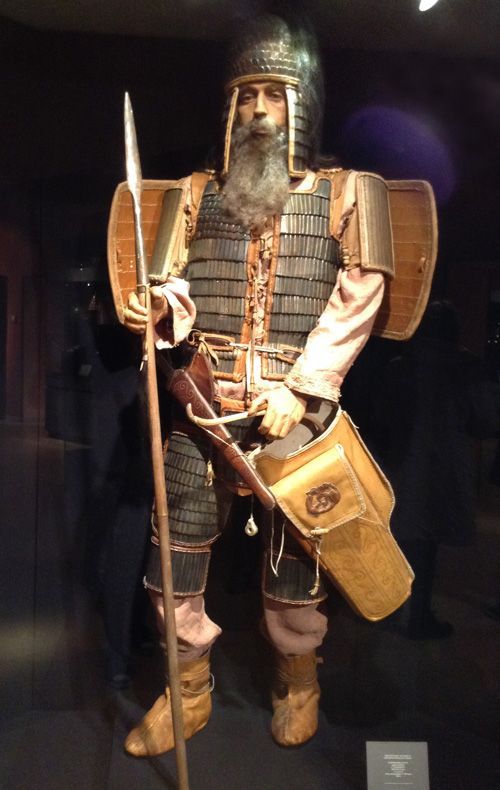
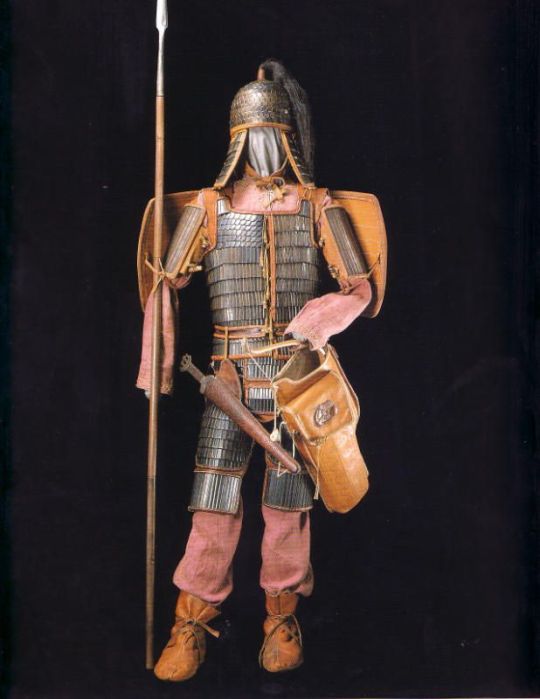
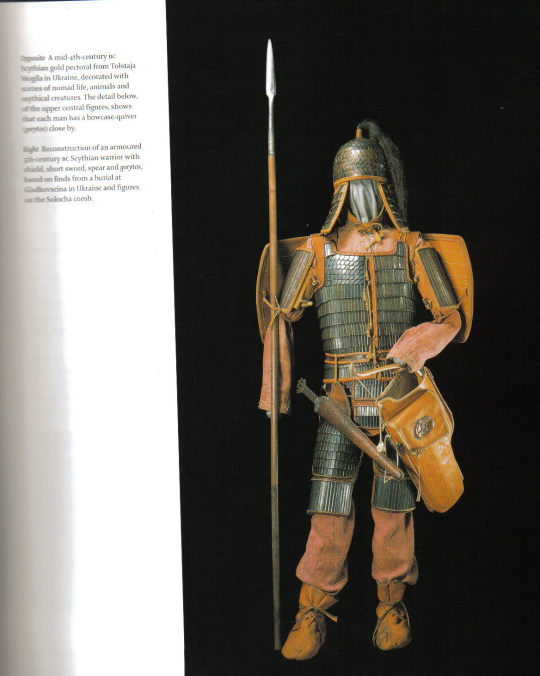
Costume reproduction of armored Scythian warrior 5th C. BCE with shield, short sword, spear, and gorytos. Based on finds from a burial at Gladkovscina in Ukraine and figures on the Solocha comb.
#scythian#archaeology#ancient history#history#ancient#antiquities#museums#ukraine#military history#4th century bce
311 notes
·
View notes